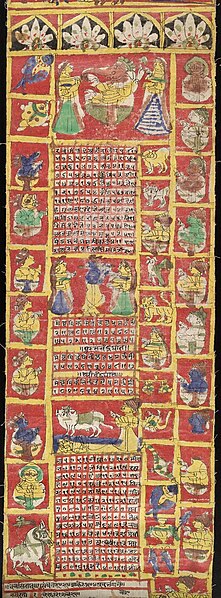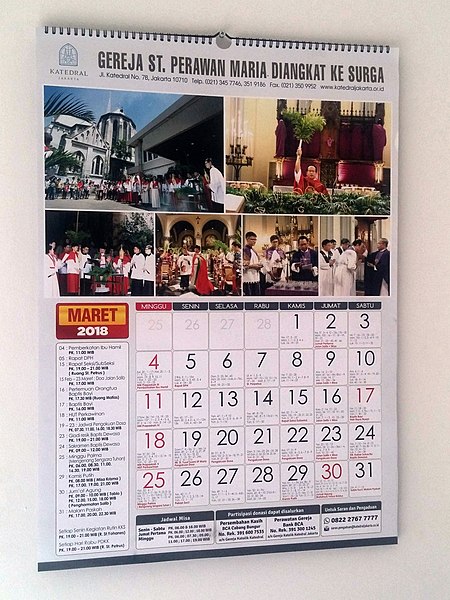An almanac is a regularly published listing of a set of current information about one or multiple subjects. It includes information like weather forecasts, farmers' planting dates, tide tables, and other tabular data often arranged according to the calendar. Celestial figures and various statistics are found in almanacs, such as the rising and setting times of the Sun and Moon, dates of eclipses, hours of high and low tides, and religious festivals. The set of events noted in an almanac may be tailored for a specific group of readers, such as farmers, sailors, or astronomers.
Old Moore's Almanack is an astrological almanac which has been published in Britain since 1697.
The 1st cent. Menologium Rusticum Colotianum, discovered in Rome and now held by the Archeological Museum in Naples
A page from the Almanac for the Hindu year 1871–72
MS. 8932. Medieval folding almanac (15th century)
A calendar is a system of organizing days. This is done by giving names to periods of time, typically days, weeks, months and years. A date is the designation of a single and specific day within such a system. A calendar is also a physical record of such a system. A calendar can also mean a list of planned events, such as a court calendar, or a partly or fully chronological list of documents, such as a calendar of wills.
Modern day Indonesian Gregorian calendar for a Catholic church
British calendar, 1851, gilt bronze and malachite, height: 20.3 cm, Metropolitan Museum of Art (New York City)
Equinox seen from the astronomic calendar of Pizzo Vento at Fondachelli Fantina, Sicily
Catalan early 20th century perpetual calendar








